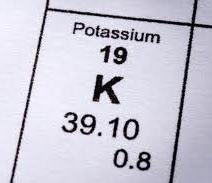August 28th, 2011 by GarySchwitzer in Health Tips, News
No Comments »

After seeing the NBC Nightly News last night, a physician urged me to write about what he saw: a story about a “simple blood test that could save women’s lives.”
Readers – and maybe especially TV viewers – beware whenever you hear a story about “a simple blood test.”
And this is a good case in point.
Brian Williams led into the story stating:
“Two of three women who die suddenly of cardiac heart disease have no previous symptoms which is all the more reason women may want to ask their doctors about a blood test that can be a lifesaver.”
Then NBC News chief medical editor Dr. Nancy Snyderman said:
“It’s not a new test, it’s not an experimental test but nonetheless it’s a test not a lot of people know about and that’s a problem because this simple blood test could save your life.”
The test in question is Read more »
*This blog post was originally published at Gary Schwitzer's HealthNewsReview Blog*
March 4th, 2011 by Toni Brayer, M.D. in Health Tips, Research
No Comments »

 There are few medical conditions that people fear more than a stroke. We know that blood pressure control and lowering cholesterol levels reduces stroke risk. Now, thanks to a huge analysis from Italy published in the Journal of the American College of Cardiology, we know that higher dietary consumption of potassium is associated with lower rates of stroke and could also reduce the risk of coronary heart disease and total cardiovascular disease, too. What is even more remarkable is that the results apply to all parts of society and not just to specific “at-risk” subgroups.
There are few medical conditions that people fear more than a stroke. We know that blood pressure control and lowering cholesterol levels reduces stroke risk. Now, thanks to a huge analysis from Italy published in the Journal of the American College of Cardiology, we know that higher dietary consumption of potassium is associated with lower rates of stroke and could also reduce the risk of coronary heart disease and total cardiovascular disease, too. What is even more remarkable is that the results apply to all parts of society and not just to specific “at-risk” subgroups.
Most doctors aren’t even aware of how important it is to eat potassium-rich foods. And what are these foods that have potassium? Surprise: It’s fruits and vegetables like bananas, tomatoes, oranges, apricots, most legumes, spinach, winter squash, avocado, kiwi, and cantaloupe. Actually, almost all fruits and veggies have moderate to high potassium content.
The researchers looked a number of well-done studies that included 247, 510 participants over age 30 and found that those patients with the higher potassium intake reduced their stroke risk by 21 percent. The Italian doctors say the protective effect of potassium against stroke is in part due to its blood pressure lowering effects and also due to other properties of the potassium mineral, such as the inhibition of free radical formation.
I’ve written before about the DASH diet, which also found that reduction of sodium and addition of fruits and vegetables to the diet is an effective way to control blood pressure. The DASH diet is high in potassium.
Think about it: Did you have five servings of fruits and vegetables today? Numerous studies have shown their life-prolonging benefits. This new study just adds to what we already know. I challenge all readers to keep a diet count and make sure you are eating five fruit and vegetable servings a day — every day — to help reduce your risk of stroke, cancer, and heart attack.
*This blog post was originally published at EverythingHealth*
February 10th, 2011 by PJSkerrett in Health Tips, Research
No Comments »

 As a youngster, I loved being part of the baby boom — it meant there were dozens of kids on my block who were ready to play hide-and-seek or join mysterious clubs. Now that I’m of an AARP age, there’s one club I don’t want to join: The one whose members have bypass scars, pacemakers, or other trappings of cardiovascular disease. The American Heart Association’s (AHA) gloomy new forecast on cardiovascular disease tells me it won’t be easy to avoid.
As a youngster, I loved being part of the baby boom — it meant there were dozens of kids on my block who were ready to play hide-and-seek or join mysterious clubs. Now that I’m of an AARP age, there’s one club I don’t want to join: The one whose members have bypass scars, pacemakers, or other trappings of cardiovascular disease. The American Heart Association’s (AHA) gloomy new forecast on cardiovascular disease tells me it won’t be easy to avoid.
The AHA foresees sizeable increases in all forms of cardiovascular disease (see table) between now and 2030, the year all of the boomers are age 65 and older. Those increases will translate into an additional 27 million people with high blood pressure, eight million with coronary heart disease, four million with stroke, and three million with heart failure. That will push the number of adult Americans with some form of heart disease to 110 million.

(Percentages refer to the percentage of Americans aged 18 years and older.)
If the AHA’s projections are accurate, the cost of treating cardiovascular disease would balloon from $272 billion today to $818 billion in 2030. Add in the cost of lost productivity, and it jumps to more than $1 trillion. Yikes!
Although obesity and inactivity are part of the problem, much of the increase comes from the graying of the baby boom. We can’t stop boomers from aging, but we can fight cardiovascular disease, a condition the AHA calls “largely preventable.” Read more »
*This blog post was originally published at Harvard Health Blog*
February 1st, 2011 by RyanDuBosar in News, Research
No Comments »

Real total direct medical costs of cardiovascular disease (CVD) could triple, from $273 billion to $818 billion (in 2008 dollars) by 2030. Real indirect costs, such as lost productivity among the employed and unpaid household work, could increase 61 percent, from $172 billion in 2010 to $276 billion.
Results appeared in a policy statement of the American Heart Association.
CVD is the leading cause of mortality and accounts for 17 percent of national health expenditures, according to the statement. How much so? U.S. medical expenditures rose from 10 percent of the Gross Domestic Product in 1985 to 15 percent in 2008. In the past decade, the medical costs of CVD have grown at an average annual rate of 6 percent and have accounted for about 15 percent of the increase in medical spending.
The spending is associated with greater life expectancy, “suggesting that this spending was of value,” the authors wrote. But as the population ages, direct treatment costs are expected to increase substantially, even though lost productivity won’t, since seniors are employed at lower rates.
If current prevention and treatment rates remain steady, CVD prevalence will increase by about 10 percent over the next 20 years. The estimate reflects an aging population, and one that is increasingly Hispanic. To prepare for future cardiovascular care needs, the American Heart Association projected future costs. By 2030, 40.5 percent (116 million) of the population is projected to have some form of CVD. Read more »
*This blog post was originally published at ACP Internist*
December 21st, 2010 by BarbaraFicarraRN in Better Health Network, Health Tips, Research
No Comments »

 Guest post submitted by MD Anderson Cancer Center*
Guest post submitted by MD Anderson Cancer Center*
When you raise your glass at this year’s holiday toast, choose your beverage wisely. Research shows that drinking even a small amount of alcohol increases your chances of developing cancer, including oral cancer, breast cancer and liver cancer.
Yet, other research shows that drinking small amounts of alcohol may protect the body against coronary heart disease and type 2 diabetes. Some evidence even suggests that red wine may help prevent cancer.
Researchers are still trying to learn more about how alcohol links to cancer. But, convincing evidence does support the fact that heavy drinking damages cells and contributes to cancer development.
Confused? Use our beverage guide to choose a drink with the lowest health risk, and learn your recommended drink limit and what alcoholic drinks to avoid. Read more »
*This blog post was originally published at Health in 30*









 Guest post submitted by MD Anderson Cancer Center*
Guest post submitted by MD Anderson Cancer Center*







